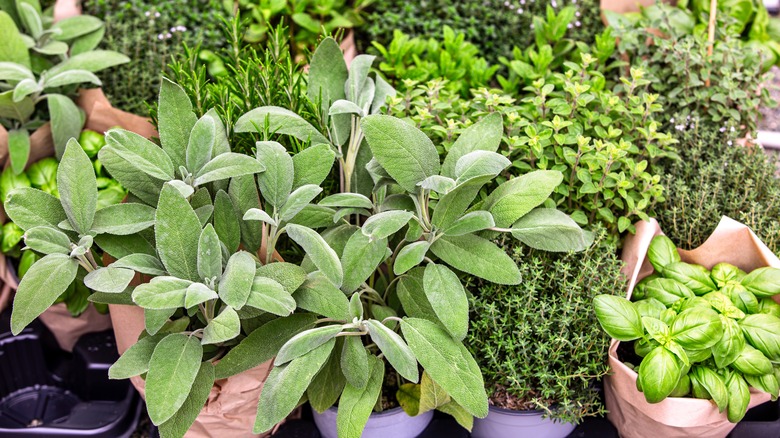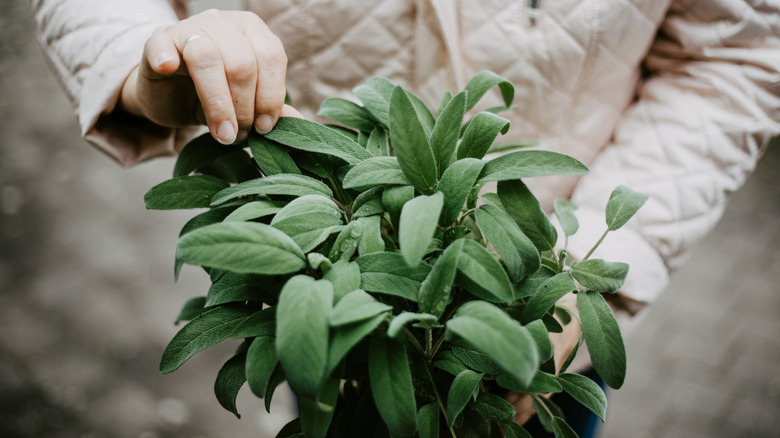Growing Sage Indoors Is A Breeze With Our Expert Tips
We may receive a commission on purchases made from links.
Do you love to add the peppery, earthy flavor of sage to your cooking? It's the perfect herb to spice up your fall dishes, as it pairs so well with the sweetness of squash and pumpkin in savory recipes. Sage is also popular around Thanksgiving and Christmas when it's used in delectable stuffing for turkey and roast pork. However, at this time of the year, if you live in a colder climate, your garden-grown sage will have already died down. But fear not, because you can easily grow culinary sage (Salvia officinalis) indoors with our expert tips from House Digest's own garden editor and master gardener, Tiffany Selvey.
When growing sage in your home, there are two vital things it needs, according to Selvey — correct lighting and no overwatering. As a herb that hails from a Mediterranean climate, sage requires lots of light. In fact, for the plant to grow and live happily inside, you need to give it a minimum of eight hours of sunlight daily. So, even if you have a fairly sunny windowsill in your kitchen, this might not provide sufficient illumination for your sage plant. But there is a solution. You can invest in a full-spectrum grow light, like the GooingTop LED Grow Light, to place directly above your plant. This should be left on for at least eight hours every single day to give your sage all the bright sunlight it needs to grow. Just remember to choose the perfect grow light to help your plant thrive.
Take heed of sage's water requirements
When House Digest spoke exclusively to Tiffany Selvey, our garden editor and master gardener, she noted that sage is actually a drought-tolerant plant that "doesn't do well in soggy soils. This is one of the reasons that sage is one herb you should avoid growing alongside mint in the garden because the latter has much higher water needs. She advised that the pot you choose has adequate drainage holes so excess water doesn't pool in the base. Selvey also shared, "I prefer terra cotta to plastic," and there's a good explanation for this. You see, terra cotta is porous, which means the moisture can evaporate through the sides of the pot as well.
On top of that, Selvey advises, "Water [your sage] only when the soil is dry an inch or so below the surface." You can test the moisture content in the mix simply by poking your finger into it. You can also put a popsicle stick or chopstick into the potting mixture. If the stick comes out clean, it's time to water it, but if it has damp dirt sticking to it, wait a day or two and test again. You could also get an inexpensive moisture meter, similar to XLUX Soil Moisture Meterto, which makes testing the soil even easier. Other than that, make sure you prune the plant regularly by snipping off the tips to use in your cooking. This should promote plenty of new growth. As a bonus, sage is one of those household plants that roaches cannot stand.

